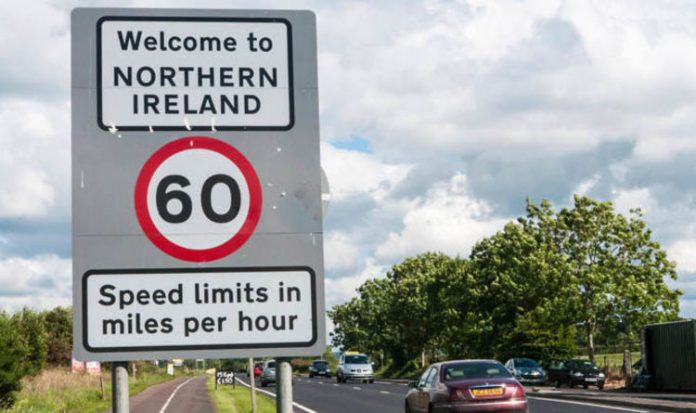[ad_1]
Brussels sources suggested EU negotiators were ready to discuss technological solutions to checking goods crossing between Northern Ireland and the Irish Republic after next year’s departure from the bloc to avoid the need for a new customs barrier.
Under the plan, goods could be tracked using barcodes on shipping containers for “trusted trader” firms routinely importing and exporting between the two territories.
EU officials were also reported to be in discussions with the Dublin government about putting British rather than EU inspectors in charge of goods crossing the border.
The signs of a breakthrough emerged today as the Prime Minister was preparing for a summit of EU leaders in Salzburg on Wednesday.
Whitehall officials expect the informal gathering in the Austrian city will see a move towards a significant breakthrough in the talks after a long-awaited concession from the EU.
Diplomats hope the moves will help “unblock” the talks after months of stalemate over the issue.
Last week, senior Tory Eurosceptics including Jacob Rees-Mogg and the former EU Exit Secretary David Davis unveiled a blueprint calling for digital technology to be used to solve the Irish border questions.
Now the plan being discussed in Brussels is understood to involve a similar emphasis on technology to avoid the need for a “hard border”.
Confidential diplomatic notes from the EU revealed on Monday said the bloc’s negotiators wanted to resolve the tension over the issue.
One note said: “The biggest unsolved problem is Northern Ireland. There is a political mobilisation in the UK in this regard. Therefore we are trying to clarify the EU position.”
Another note was reported as saying: “The EU wants a transit procedure or process.”
EU chief Brexit negotiator Michel Barnier is said to be working on a new “protocol” text outlining the technological plan to minimise physical customs checks.
Sabine Weyand, Mr Barnier’s deputy, told ambassadors recently: “For the main part, these controls would not have to happen at a border.
“It is to be expected that the reach of the backstop would decrease anyway in case of an agreement about the future relationship.”
EU Exit Secretary Dominic Raab is understood to have given Brussels official data requested by Mr Barnier showing the volume of trade movements across the Irish Sea.
It showed that most trade between the UK mainland and Northern Ireland was everyday movement of goods for high-street stores rather than major shipments of produce carried out by large companies.
Stewart Jackson, a former chief of staff at the Department for Exiting the EU claimed the Brussels plan for high-tech customs checks paved the way for a UK-EU deal based on Canada’s free trade deal with the bloc.
“If this is true therefore is now no impediment to a Canada-style deal.”
He claimed the Prime Minister’s so-called Chequers Plan for a deal based on close customs links and a “common rulebook” for regulations on goods was “surely dead”.
Mrs May is expected to plead her case for her proposals at a dinner for EU leaders in Salzburg.
The following day, the leaders of the 27 nations staying in the EU after Brexit will hear a report from Mr Barnier on the progress so far and discuss the next steps in the process.
[ad_2]







